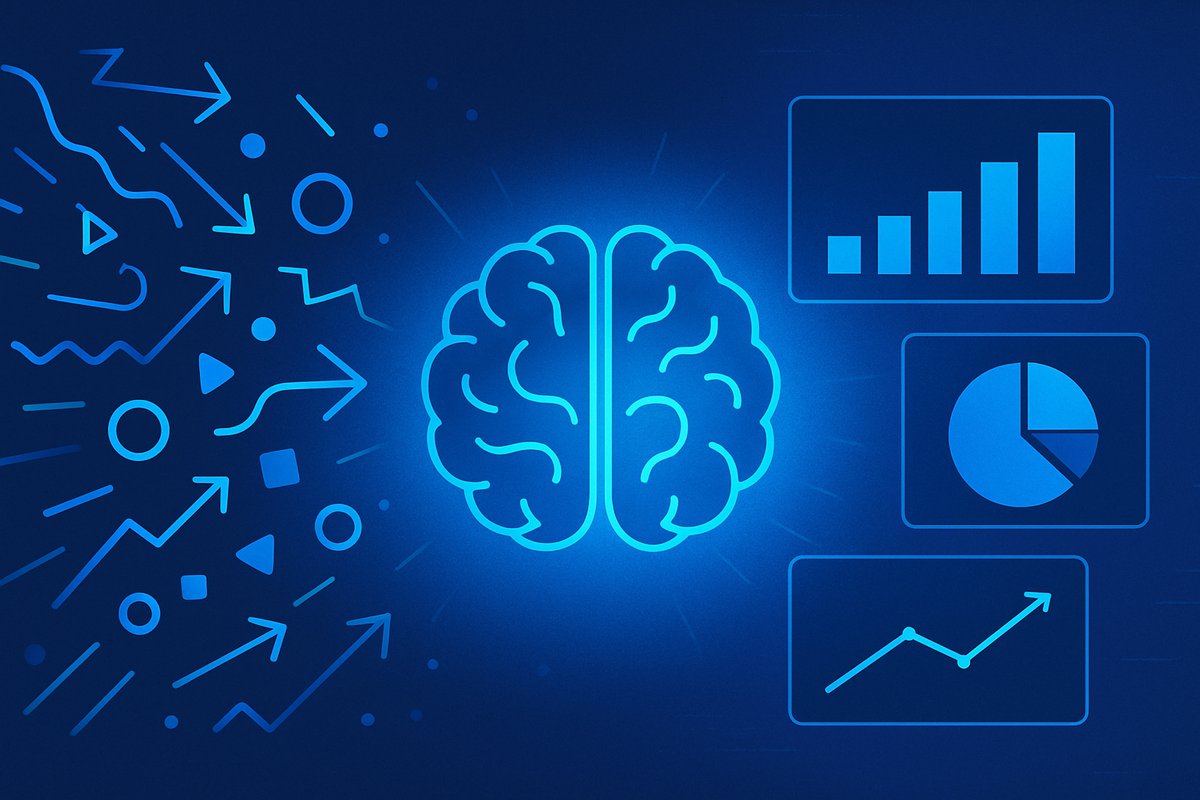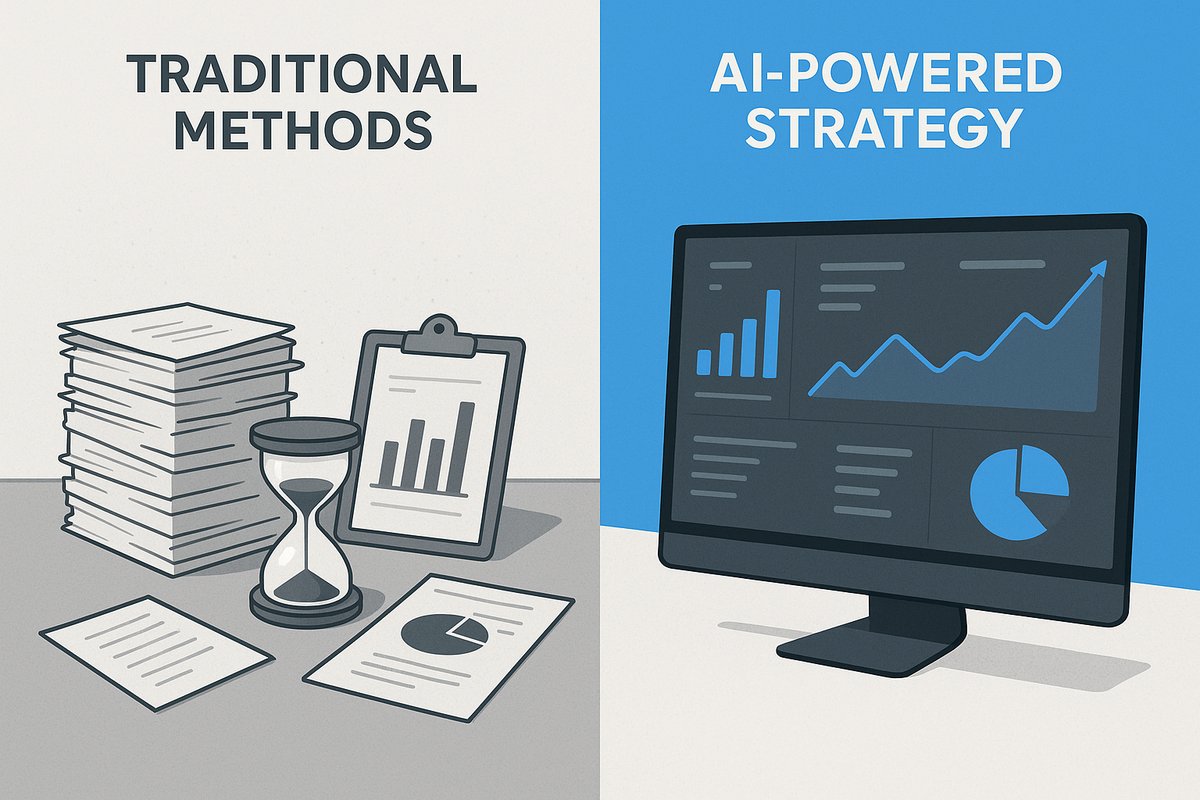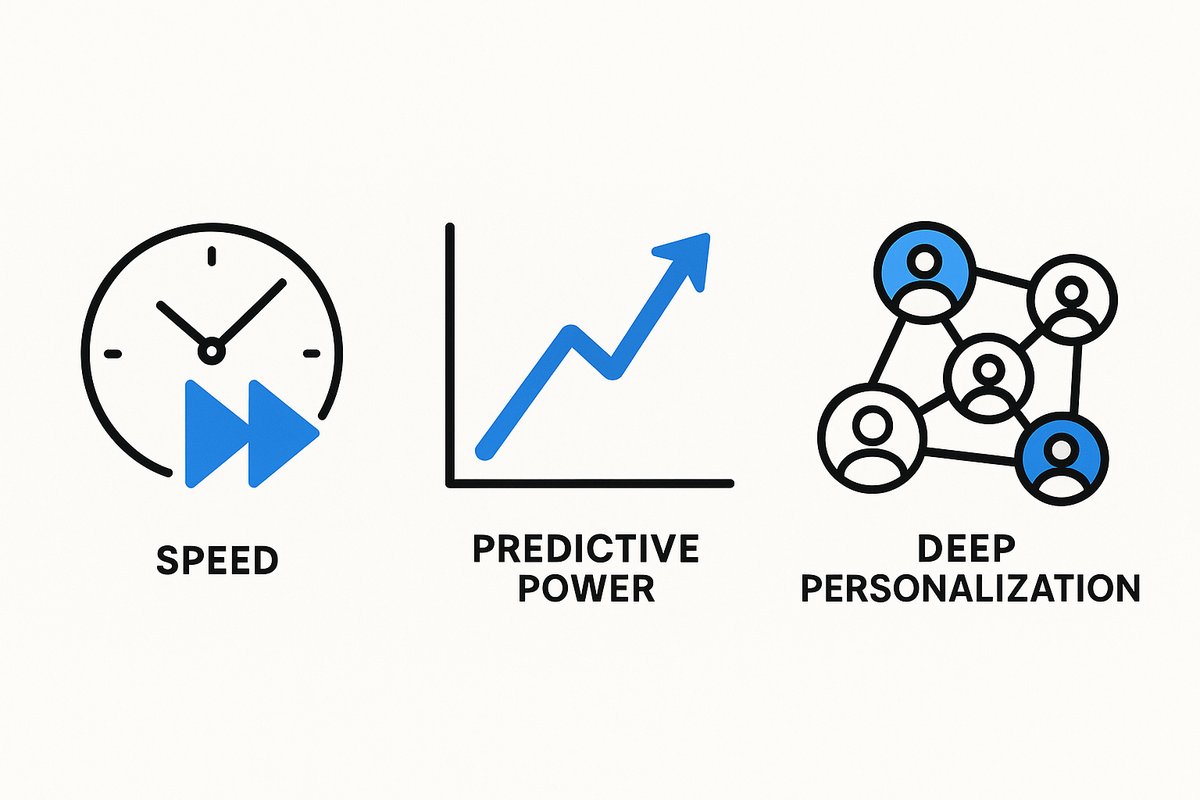AI Market Research: Your Guide to Faster Insights in 2025
Stop waiting for slow, outdated reports. Learn how AI market research delivers faster, predictive insights to stay competitive in 2025. Get your roadmap now!
Posted by
Your 2025 Guide to AI-Powered Market Research: From Insight to Impact

AI Market Research: From Insight to Impact
In 2025, are you still waiting weeks for market research reports that are outdated the moment they land on your desk? The slow, manual methods of the past are no longer a viable strategy; they are a liability. This guide is the definitive roadmap for transitioning from traditional research to a modern, AI-powered strategy. We will move beyond theory and provide a practical framework for leveraging AI to get faster, more accurate, and predictive insights that give you a competitive edge. As highlighted in academic research on AI in marketing, the integration of AI is not just an enhancement but a fundamental shift in how businesses can understand and anticipate consumer needs. This guide builds on that academic foundation with practical, real-world applications for anyone wondering how to use AI for market research.
The End of an Era: Why Traditional Market Research Fails in 2025

Traditional vs. AI-Powered Market Research
To stay competitive, businesses need insights that move at the speed of the market, not at the pace of manual data entry. The urgent need for a new approach is clear when you examine the critical failures of traditional methods in today's digital economy. Imagine launching a new marketing campaign based on survey data that took six weeks to collect and analyze. In that time, your competitor has launched a new feature, a new social media trend has emerged, and the customer conversations you based your strategy on have completely changed. While many industry analyses, like this one from TGM Research, discuss the broad impact of AI, understanding the specific failures of the old way is the first step toward embracing the new.
The Speed & Scale Barrier: Too Slow for Real-Time Decisions
Traditional market research, heavily reliant on manual methods like surveys, interviews, and focus groups, is fundamentally too slow. The process of designing studies, recruiting participants, gathering responses, and then manually analyzing the data can take weeks or even months. In a world where consumer sentiment can shift overnight, this lag renders the findings historical rather than actionable. AI-powered platforms, by contrast, can process millions of data points from across the internet in minutes, delivering real-time market insights AI can uncover before a human analyst has even finished their first spreadsheet.
The Hidden Biases: How Human Error Skews Your Data
Every step of the traditional research process is susceptible to human bias. The way a question is phrased in a survey can influence the answer. The presence of an interviewer can alter a participant's candor in a focus group. Analysts interpreting qualitative data may unconsciously project their own assumptions onto the findings. These biases create a distorted view of the market and lead to flawed conclusions. Effective AI in consumer behavior analysis minimizes these risks by analyzing raw, unfiltered data without preconceived notions, identifying patterns based purely on the information itself.
The Cost Prohibitive Model: Why Deep Insights Were a Luxury
Comprehensive traditional market research has long been a luxury reserved for large corporations. The costs associated with hiring research firms, compensating participants, and dedicating hundreds of hours to manual analysis are substantial. This high barrier to entry left small and medium-sized enterprises (SMEs) to rely on guesswork. The rise of automated market research platforms has democratized this process, making deep, data-driven insights accessible and affordable for businesses of any size, leveling the playing field.
The AI Revolution: 3 Core Benefits for a Competitive Edge

Core Benefits of AI in Market Research
AI is the direct solution to the speed, bias, and cost barriers of the past. It transforms market research from a slow, reactive exercise into a fast, proactive engine for growth. The scale of this transformation is reflected in the market itself; according to Grand View Research, the global AI market is projected to reach nearly $1.8 trillion by 2030. Embracing this revolution provides tangible benefits that create a significant competitive advantage.
Unprecedented Speed: From Automated Data Collection to Real-Time Insights
- Before AI: Manually scouring blogs, news sites, and forums for industry trends, followed by weeks of survey analysis.
- After AI: Automated market research platforms continuously scan millions of data sources—social media, reviews, news, forums—and use natural language processing (NLP) to analyze text and sentiment in minutes. This provides real-time market insights AI uncovers as they happen, not weeks later.
Predictive Power: Shifting from Reactive to Proactive Strategy
- Before AI: Analyzing past sales data to understand what has already happened.
- After AI: Machine learning models analyze current market conversations, competitor activities, and economic indicators to forecast what will likely happen next. This use of AI for market trend analysis allows businesses to anticipate market shifts, predict product demand, and develop strategies that are ahead of the curve.
Deep Personalization: Understanding Customers at Scale
- Before AI: Grouping customers into broad demographic categories like "males, 18-34."
- After AI: AI analyzes thousands of data points—purchase history, online behavior, social media comments, support tickets—to uncover nuanced micro-segments. Using AI customer segmentation tools allows for hyper-targeted marketing and product development that speaks directly to the specific needs and pain points of different customer groups, a level of detail impossible to achieve manually. This is a core function of AI in consumer behavior analysis.
Getting Started: A Practical Framework for AI Market Research
While many guides, such as the one offered by Quantilope, provide a good high-level overview, this section delivers a practical, step-by-step framework to get you started. The power of AI, driven by foundational technologies from industry leaders like Google, Microsoft, and IBM, is most effective when applied to clear business objectives.
Step 1: Identify Your Core Business Questions
Technology is a tool, not a magic wand. The first and most critical step is to define what you need to know. Vague questions lead to vague answers. Instead, focus on specific, impactful business challenges.
- Instead of: "What are people saying about our industry?"
- Try: "What are the top three unmet needs customers are discussing in relation to [our product category]?"
- Instead of: "What are our competitors doing?"
- Try: "What is the public sentiment surrounding our main competitor's new feature launch?"
Knowing how to use AI for market research begins with asking the right questions.
Step 2: Leverage AI for Market Trend Analysis
Once you have your question, you can deploy AI to find the answer. For trend analysis, the process involves using AI to monitor and analyze vast streams of public data.
- Data Sources: News articles, industry blogs, academic papers, social media platforms (like X, Reddit, LinkedIn), and patent filings.
- AI Technique: Natural Language Processing (NLP) and time-series analysis. The AI scans this content for keywords and concepts related to your business question, tracking the frequency and sentiment of these mentions over time.
- Business Outcome: You can identify emerging trends before they become mainstream, spot rising consumer concerns, and get real-time market insights AI provides to adjust your strategy proactively. This is a crucial application of AI for market trend analysis.
Step 3: Implement AI for Advanced Customer Segmentation
To understand your audience on a deeper level, AI can analyze your internal and external data to build rich, dynamic customer profiles.
- Data Sources: Your CRM data, website analytics, customer support logs, product reviews, and social media comments mentioning your brand.
- AI Technique: Clustering algorithms. These algorithms group customers based on shared behaviors, preferences, and pain points, going far beyond simple demographics.
- Business Outcome: Using AI customer segmentation tools, you can create highly personalized marketing campaigns, tailor product recommendations, and identify your most valuable customer segments, ultimately improving customer loyalty and ROI. This advanced AI in consumer behavior analysis provides a roadmap for effective engagement.
The Future is Now: Emerging AI Trends Shaping Tomorrow's Insights
The field of AI is evolving at an incredible pace. While some platforms focus on a single data source, the future lies in synthesizing insights from all of them. Staying ahead means understanding the next wave of innovations that are already beginning to shape market research.
Generative AI: From Data Analysis to Insight Synthesis
The technology behind tools like ChatGPT is revolutionizing how we interact with data. In market research, generative AI in market research is moving beyond simple analysis to active synthesis. Instead of just presenting you with charts and graphs, these new tools can write a complete executive summary of findings, create detailed customer persona descriptions based on raw data, and even generate potential marketing copy targeted at a newly identified segment.
Voice & Image Analysis: Understanding the Unspoken Customer
Some of the most valuable customer feedback is never written down. New AI models can now analyze unstructured data like voice and images to extract meaning.
- Voice Analysis: AI can analyze recordings of customer service calls to detect sentiment, frustration, or delight based on tone, pitch, and word choice. While platforms like Gong.io showcase the power of analyzing sales conversations, this is just one piece of a much larger puzzle. The true power emerges when this voice data is combined with text, social, and visual data for a 360-degree view.
- Image Analysis: AI can analyze images posted on social media to understand how customers are using your products in real-world settings, identify branding inconsistencies, or gauge reactions to visual marketing campaigns, a focus of social intelligence platforms like Brandwatch.
Hyper-Automation: Creating Self-Optimizing Marketing Engines
Hyper-automation is the next frontier. This involves creating systems where AI not only provides an insight but also automatically triggers a corresponding action. Imagine automated market research platforms that identify a surge in negative sentiment around a specific product feature. A hyper-automated system could instantly pause ad spend for that feature, notify the product team with a summary of the complaints, and even launch a small survey to the affected customer segment to gather more detailed feedback—all without human intervention.
In 2025, the market doesn't wait. The difference between leading and lagging is the speed and accuracy of your insights. AI-powered research is no longer a futuristic concept; it's the essential engine for the speed, accuracy, and predictive power you need to win. The transition from slow, biased, and expensive traditional methods to a modern AI strategy is the single most important competitive step your business can take today. Learning how to use AI for market research and applying AI for market trend analysis is the key to unlocking proactive, data-driven growth.
Ready to stop looking in the rearview mirror? See how ProblemTotem can help you build your 2025 market intelligence roadmap.
Frequently Asked Questions (FAQ)
What is the best AI market research software?
The best AI market research software depends entirely on your specific goals. For social media monitoring and brand health, tools focused on social listening are ideal. For understanding customer conversations and feedback, consumer intelligence platforms are better suited. The most effective automated market research platforms are those that align directly with the business questions you need to answer, whether that's trend analysis, competitor tracking, or audience segmentation.
How can AI help with competitive analysis?
AI transforms competitive analysis from a static report into a dynamic, real-time intelligence stream. AI competitive analysis tools can continuously monitor your competitors' digital footprint. This includes tracking their pricing changes, analyzing customer sentiment on their new product launches, monitoring their social media campaigns and engagement rates, and identifying gaps in their content strategy that you can exploit.
Is AI market research suitable for startups?
Absolutely. In fact, AI market research for startups is a powerful democratizing force. It provides startups with access to the same high-level insights that were once only affordable for large corporations with massive research budgets. By leveraging affordable and scalable AI tools, startups can quickly understand niche markets, identify audience pain points, and make data-driven decisions to compete effectively against much larger players.
Ready to Transform Your Marketing Research?
Join marketing professionals who've accelerated their research process and improved campaign performance with real customer insights.
Start Your Research